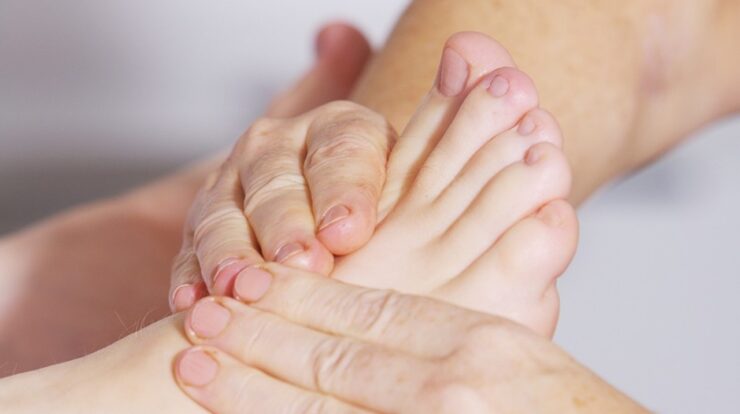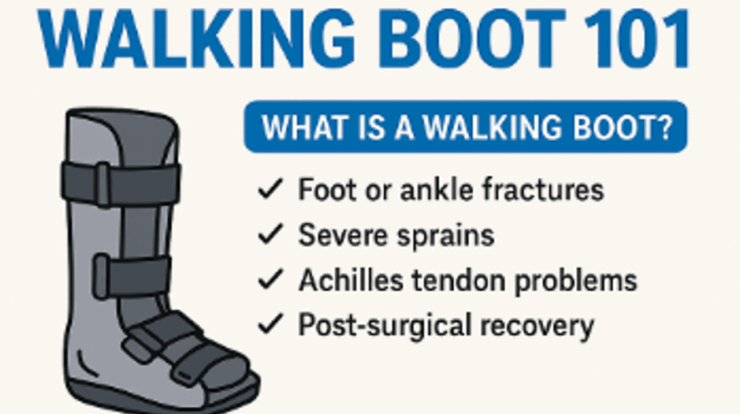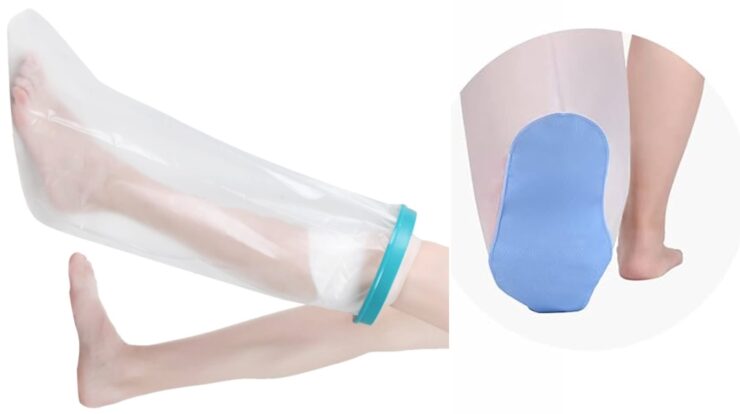
Arthritis is a condition that affects millions of people worldwide, causing pain, discomfort, and reduced mobility in various joints of the body.
While arthritis can impact any joint, it can be particularly distressing when it targets the feet.
In this comprehensive guide, we’ll break down arthritis in the feet, from its types and causes to its symptoms and management, all presented in an easily digestible format.
Types of Arthritis Affecting the Feet
Two of the most common types of arthritis that can affect the feet are rheumatoid arthritis (RA) and osteoarthritis (OA).
- Rheumatoid Arthritis (RA): RA is an autoimmune disease where the body’s immune system mistakenly attacks its own joints, leading to inflammation. This can affect small joints, such as those found in the fingers and toes, and cause pain, swelling, and stiffness.
- Osteoarthritis (OA): OA is a degenerative condition caused by the wear and tear of joints over time. It’s more prevalent and generally affects weight-bearing joints, including the knees, hips, and feet. OA in the feet can lead to joint pain and reduced mobility.
What Causes Arthritis in the Feet?
The causes of arthritis in the feet can vary depending on the specific type of arthritis:
- Rheumatoid Arthritis (RA): The exact cause of RA is not fully understood, but it is believed to involve a combination of genetic and environmental factors. The immune system’s attack on joint tissues leads to inflammation and damage.
- Osteoarthritis (OA): OA occurs when the protective cartilage that cushions the ends of bones in joints deteriorates over time. This can result from repetitive stress, joint injuries, or natural ageing processes.
Signs and Symptoms of Arthritis in the Feet
Recognising the signs of arthritis in your feet is crucial for early intervention and effective management. Here are some common symptoms to watch out for:
- Persistent Joint Pain: Arthritis often presents as ongoing pain in the affected joints, which can be worse in the morning or after periods of inactivity.
- Swelling and Inflammation: Inflammation of the joints can cause swelling, making the affected area appear red and feel warm to the touch.
- Morning Stiffness: Many arthritis sufferers experience stiffness in their joints, particularly in the morning or after prolonged rest.
- Reduced Range of Motion: Arthritis can lead to a limited range of motion in the affected joints, making movements like bending or flexing the feet more challenging.
- Changes in Joint Shape: Over time, arthritis can cause joints to become deformed or misaligned, resulting in visible changes in the shape of the feet.
- Difficulty Walking: Pain and stiffness can hinder your ability to walk comfortably, affecting your mobility and daily activities.
- Fatigue: Chronic pain and inflammation can lead to fatigue as your body expends energy to manage these conditions.
Diagnosis and Management
If you suspect you have arthritis in your feet, seeking medical attention for an accurate diagnosis is essential.
A healthcare professional, often a rheumatologist or orthopaedic specialist, will assess your symptoms, perform physical examinations, and may request imaging tests like X-rays or MRI scans to confirm the diagnosis.
Managing Arthritis in the Feet
While there is no cure for arthritis, there are various strategies to manage its symptoms and improve your quality of life:
- Medications: Depending on the type and severity of arthritis, your doctor may prescribe pain-relieving medications, anti-inflammatory drugs, or disease-modifying antirheumatic drugs (DMARDs) for RA.
- Physical Therapy: A physical therapist can design exercises to improve joint mobility, strengthen muscles, and reduce pain. Stretching and flexibility exercises can also help alleviate stiffness.
- Footwear: Wearing supportive and cushioned footwear can reduce pressure on the joints and provide comfort. Orthotic inserts or custom-made shoes may be recommended.
- Weight Management: Maintaining a healthy weight can lessen the stress on weight-bearing joints, including those in the feet.
- Hot and Cold Therapy: Applying heat or cold to affected joints can provide temporary relief from pain and inflammation.
- Assistive Devices: Devices like canes or braces can support your feet and alleviate strain on the joints.
Lifestyle Tips for Arthritis Management
In addition to medical interventions, adopting specific lifestyle changes can enhance your overall well-being:
- Engage in regular low-impact exercises like swimming or cycling to maintain joint flexibility and strength.
- Prioritize a balanced diet rich in anti-inflammatory foods such as fruits, vegetables, and omega-3 fatty acids.
- Practice stress-reduction techniques like meditation or yoga to help manage pain and improve mental well-being.
Conclusion
Arthritis in the feet can bring challenges, but with early recognition, accurate diagnosis, and proper management, you can regain control over your foot health and maintain an active lifestyle.
If you’re experiencing symptoms, don’t hesitate to consult a medical professional for guidance and personalised treatment.
By taking proactive steps, seeking medical advice, and making positive lifestyle choices, you can navigate the path of arthritis in your feet with resilience and comfort.






